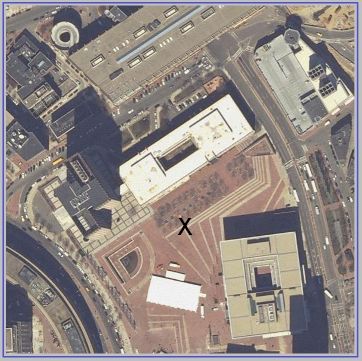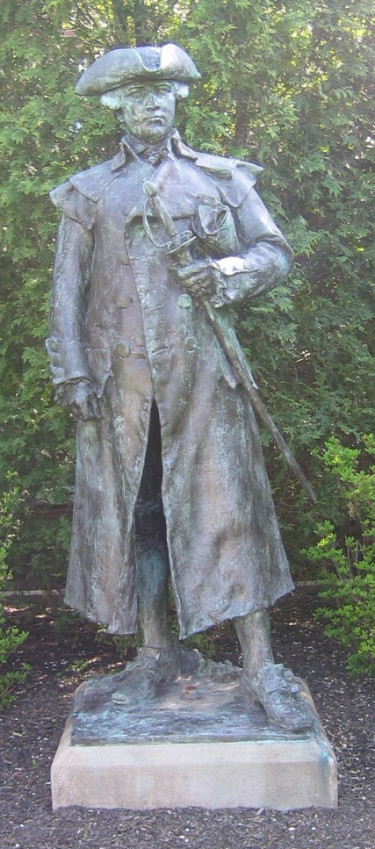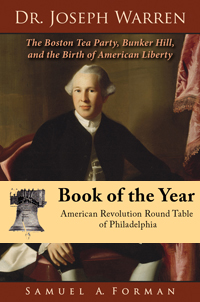The Boston Landmarks Commission (BLC) is currently considering a petition of Roxbury residents to designate the Warren homestead as an historic site and building. Several people attending the City Hall hearing on April 26, 2016 also opined on the fate of the bronze statue of Joseph Warren, which used to stand on a now-gone traffic island across from the Warren house. That statue, designed and cast by sculptor Paul Bartlett circa 1903, had been relocated under curious circumstances to the private campus of Roxbury Latin School. There it has stood unmarked and publicly inaccessible for the past 46 years. The statue, towering 12 feet tall and weighing in at 4,000 pounds of bronze (said to be from melted Civil War cannon), is the property of the citizens of Boston. It is under the immediate purview of the Boston Arts Commission (BAC). My most recent information is that the BAC is seeking clarification from the Boston Redevelopment Authority on whether the statue figures into their current plans. BAC’s last official decision on the statue was to consign it the Redevelopment Authority in 1966 for relocation in front of a neighborhood civic center, whose construction subsequently became long delayed and re-imagined.
J.L. Bell nicely summed up the situation and put forth one idea for its relocation on his blog Boston1775. He has kindly permitted me to republish here, in its entirety, that posting of April 11, 2013 (-SAF).
Author: J.L. Bell
“As I described yesterday, Boston’s bronze statue of Dr. Joseph Warren now stands in a courtyard at the Roxbury Latin School in West Roxbury. In 2011, the Boston Globe suggested that the city should find a more public site. But where?
One possibility is simply to leave the statue where it is. The school seems to care for it well. It might inspire the 300 boys who study there. Most telling, since the Globe’s editorial no other institution appears to have stepped forward with more enthusiasm about the statue.
Another possibility is, of course, back at Warren Square in Roxbury, the statue’s original site. That was fairly close to where Warren grew up. The traffic island where the statue originally stood is now too small, but there are some green spaces in the area, some already labeled with the Warren name. Yet neighbors might well see more to admire in Phillis Wheatley, honored in a nearby park, than in the slaveholding doctor.
Here’s a third possibility: the approximate site of the house Dr. Warren was renting in 1775, the year he sent William Dawes and Paul Revere to Lexington and the year in which he died at the Battle of Bunker Hill. But where was that?
Earlier this year Charles Bahne looked into that question for Dr. Samuel Forman’s blog on Dr. Warren. A strong nineteenth-century tradition held that the American Hotel stood on the site of that house. So locating the hotel on nineteenth-century maps helps to locate the house.
And lo and behold, the spot’s on public land, near the established Freedom Trail, in an area that could use some friendly faces: Government Center Plaza.

As Boston 1775 reader Mark Jacobson pointed out this week, right now there isn’t even a plaque to identify that site as important to the start of the Revolutionary War.”

 Follow
Follow